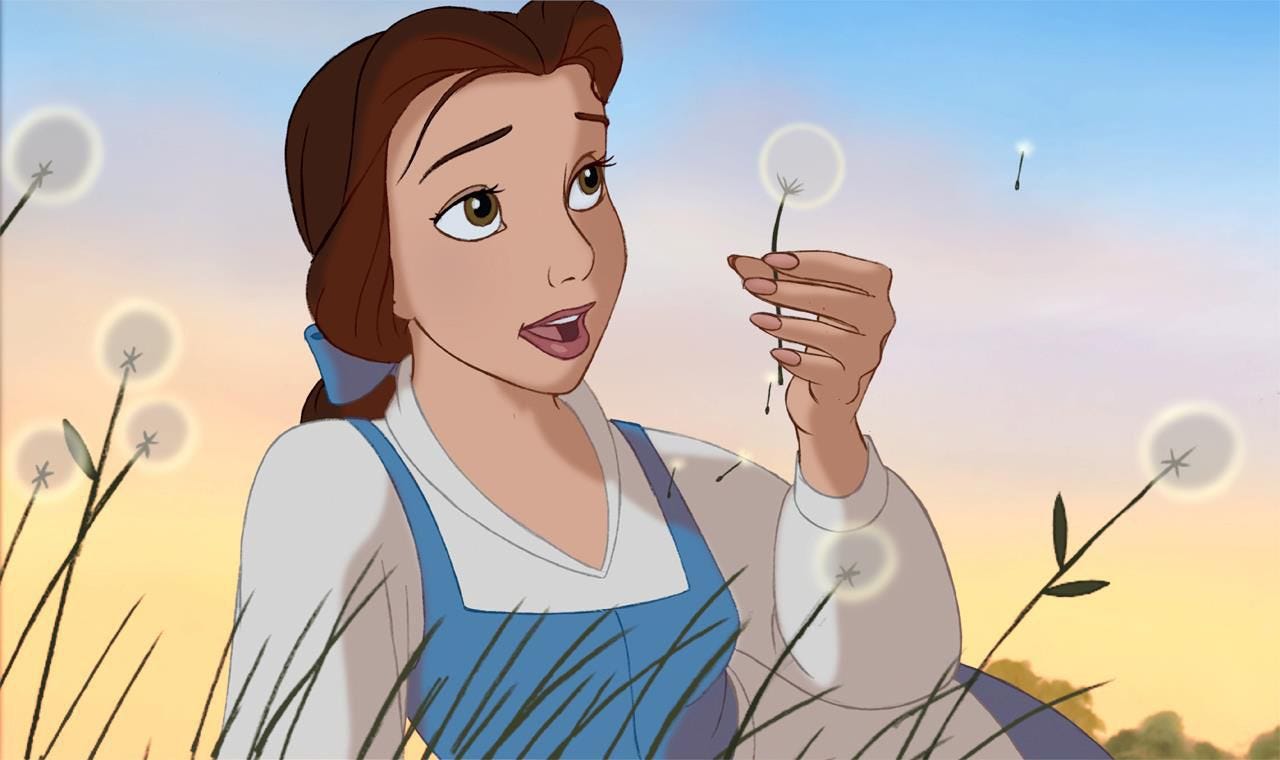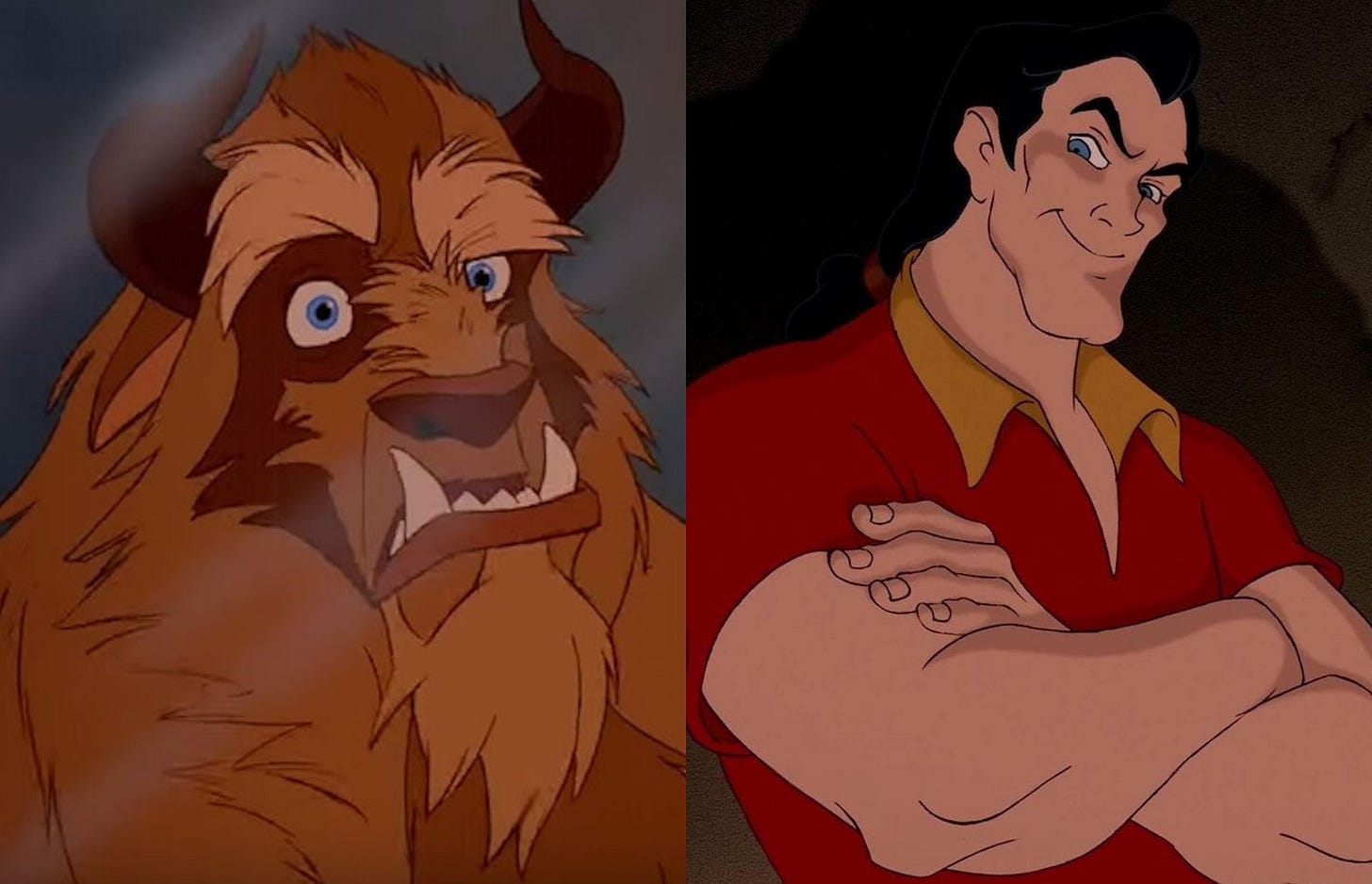The period in November between Halloween and Thanksgiving often feels like we're in limbo, throwing out our pumpkins but waiting until black Friday to put up our Christmas trees. Of course, some people have their Christmas trees up before they've served their Thanksgiving turkey, but for the most part, November always feels like a waiting period.
However, I've found there are certain movies I love watching even in the in-between months, and Beauty and the Beast has always felt like a November movie. Maybe because it was released on November 22nd, 1991, or because I remember going to see a high school production of Beauty and the Beast the weekend before Thanksgiving in 2013. Either way, the snowy landscape surrounding the Beast's castle but the lack of Christmas decorations always set it in November for me.
While I know there's been a lot of criticism surrounding live-action Disney films, and the 2017 live-action adaptation of Beauty and the Beast wasn't exactly critically acclaimed, I enjoyed it so much that I saw it three times in theaters. Beauty and the Beast has always been my favorite Disney movie ever since I was a kid when I used to reenact scenes from Barney's Night Before Christmas using my Beauty and the Beast: The Enchanted Christmas snowglobe.
For my birthday this year, I spent a week in Disney World, and the highlight was by far when I got to have dinner at the Be Our Guest Restaurant in Magic Kingdom. I sat in the grand ballroom, ate French food as the Beast walked around the entire restaurant several times, and at the end, I ate a Mickey Mouse birthday cake and, of course, the grey stuff, which, as the song suggests, really is delicious (don't believe me? Ask the dishes!)
I can't remember who said it, but Beauty and the Beast has always felt like a Broadway musical, even as an animated film. I think that's why it was so easy to adapt it into a stage play. In fact, the adaptation was the first show I ever saw on Broadway when I was only three years old. While The Little Mermaid was the start of a new era of Disney princesses, Beauty and the Beast was the beginning of Disney's 1990s Renaissance, and Belle was another step forward in the evolution of the Disney princess.
Belle
As Belle's father, Maurice, puts it in the 2017 live-action Beauty and the Beast, Belle is "headstrong." She's brave, smart, loves to read, and is kind and understanding, but she also knows how to stand up for herself. Best of all, she has incredible discernment. She knows not to trust Gaston even if the whole town is in love with him, and she knows that she can trust the Beast even if the whole town sees him as a monster.
Belle is introduced in the film during the opening number, "Belle," where she sings about not fitting in in her small town and wanting much more than her "provincial life." The townspeople are fixated on how different Belle is from everyone else. They call her "a funny girl" and are fascinated by her beauty despite her "odd" personality. Belle's also the only woman in town who doesn't fawn over Gaston because she sees right through him.
"It's just that I'm not sure I fit in here. There's no one I can really talk to,”-Belle, Beauty and the Beast.
Belle evolves throughout Beauty and the Beast, becoming even kinder and more patient as she starts to see the Beast for who he truly is instead of his appearance and bad temper. Belle's bravery shines through when she switches places with her father in Beast's castle and in the many moments when she stands up to Beast instead of letting him get away with his poor behavior. While falling in love with the Beast in his enchanted castle may not have been what Belle expected, it's exactly the adventure she sang about earlier in the film.
Belle's "I Want Song"
The "I Want Song" is a concept that came up in the Disney+ documentary Howard. Howard Ashman referenced The Little Mermaid's "Part of Your World" and Little Shop Of Horrors' "Somewhere That's Green" as two examples of the "I Want Song." However, "Belle (Reprise)" in Beauty and the Beast falls into this category as well. The song begins after Gaston proposes to Belle, and she's frustrated with how he thinks she would ever want to marry someone like him. She's also tired of the townspeople expecting her to be just like them when she so evidently is different and likes being that way.
"I want adventure in the great wide somewhere. I want it more than I can tell. And for once, it might be grand to have someone understand I want so much more than they've got planned,”-Belle (Reprise), Beauty and the Beast.
Belle runs off singing about longing for adventure and how nice it would be if someone understood that she wants a life that is different from what everyone else has. The "Belle (Reprise)" always resonated with me. Growing up around small-minded people who don't dare to step outside of the box could become quite frustrating, and like Belle, I always felt no one understood that, as she says best, "I want so much more than they've got planned."
Beast Vs. Gaston
Perception is everything in Beauty and the Beast. Gaston may appear to be the handsome, strapping prince of the film, and the Beast may appear as the villain. However, this is not the case because, as Beauty and the Beast makes clear at the very start of the film, "beauty is found within." What makes Beauty and the Beast so compelling is that Beast is the first Disney prince to be given a full backstory and character arc. Unlike the "himbos" and "golden retriever boyfriends" of movies like The Little Mermaid or Cinderella, the Beast has his own story, which drives Beauty and the Beast's plot forward.
In fact, Beauty and the Beast introduced the Beast before introducing Belle, which is something Disney hadn't done before, as the princess was always the most important part of the film. While Belle's story is also important, she and Beast's stories intertwine as they both help each other evolve as they fall in love.
After all, the Beast doesn't actually win Belle over until he starts to change his behavior and become a better version of himself who is kind and considerate instead of short-tempered and selfish. One of Beast's best moments comes when he shows Belle his library. Belle loves to read, and by allowing her to search through his massive bookshelves, he shows he's taken an interest in the things she loves.
"He's no monster, Gaston, you are,”-Belle, Beauty and the Beast
The same can not be said about Gaston. While the Beast sets Belle free toward the end of the film so that she can save her father, Gaston only agrees to help Belle's father if she agrees to marry him. Another first for Beauty and the Beast is that Gaston is the first male villain in a Disney princess film. He's much different than the villains that came before him, and he's typically left out of the group of Disney villains, like during Fantasmic at the Disney Parks or Mickey's Not So Scary Halloween Party Parade.
Gaston doesn't have magical powers, and he appears less terrifying than villains like Scar and Captain Hook. Gaston is far more realistic, especially in the way he uses his influence in town to turn the townspeople against Beast and Belle's father. He may not be as scary to kids as Maleficent, but there's something terrifying about how closely he resembles a real-life villain.
The Music Howard Ashman & Alan Menken Created
When Howard Ashman and Alan Menken put their minds together, magic happened. Beauty and the Beast has one of the best soundtracks of any Disney film, from "Belle" to Beauty and the Beast's Finale Song. The finale song was even better in the live-action Beauty and the Beast when some of Ashman's lyrics, which were cut from the original, were added back in to honor him.
"Winter turns to spring. Famine turns to feast. Nature points the way, nothing left to say, Beauty and the Beast," -Howard Ashman’s original lyrics from Beauty and the Beast.
Though "Be Our Guest" may be the most memorable musical number from the movie. The scene plays out like a Broadway musical, which is why it translated so well in its several stage productions. The number was even nominated for an Oscar in the Best Song category but lost to the film's title track. Another crucial number from Beauty and the Beast comes towards the end when Gaston convinces the townspeople to storm the Beast's castle and kill him.
When Howard Ashman's friends discussed "The Mob Song" in Howard, they found it hard to separate some of the lyrics from the public's reaction to the AIDS epidemic in the 90s. While some felt Howard wasn't referencing his disease and always separated his personal life from his work, it's hard to ignore some of the obvious truths about society that appear in the song and in this particular scene.
Because Gaston is so influential and beloved, he's able to win over the townspeople's trust. Instead of using his power for good, he pries on their fears and convinces them the Beast is a dangerous enemy, and if they want to save themselves, they have to destroy him. There's a clear parallel to the kind of leaders we've seen in our world, from Adolf Hitler to some in our own country.
While Beauty and the Beast has its criticisms regarding Belle falling in love with someone who treated her terribly at the beginning of the film, what I find the film stands for, alongside its message of true beauty lying within, is the power of compassion. When Belle met the Beast with compassion, she was able to see the good man he was underneath all the pain he was projecting out as anger.
The live-action film gives an even more in-depth look at their connection and how they both suffered from the loss of their mothers. It would be in our best interest as a society to avoid the fear-mongering presented by Gaston and take a page from Belle's book to see the beauty within.









